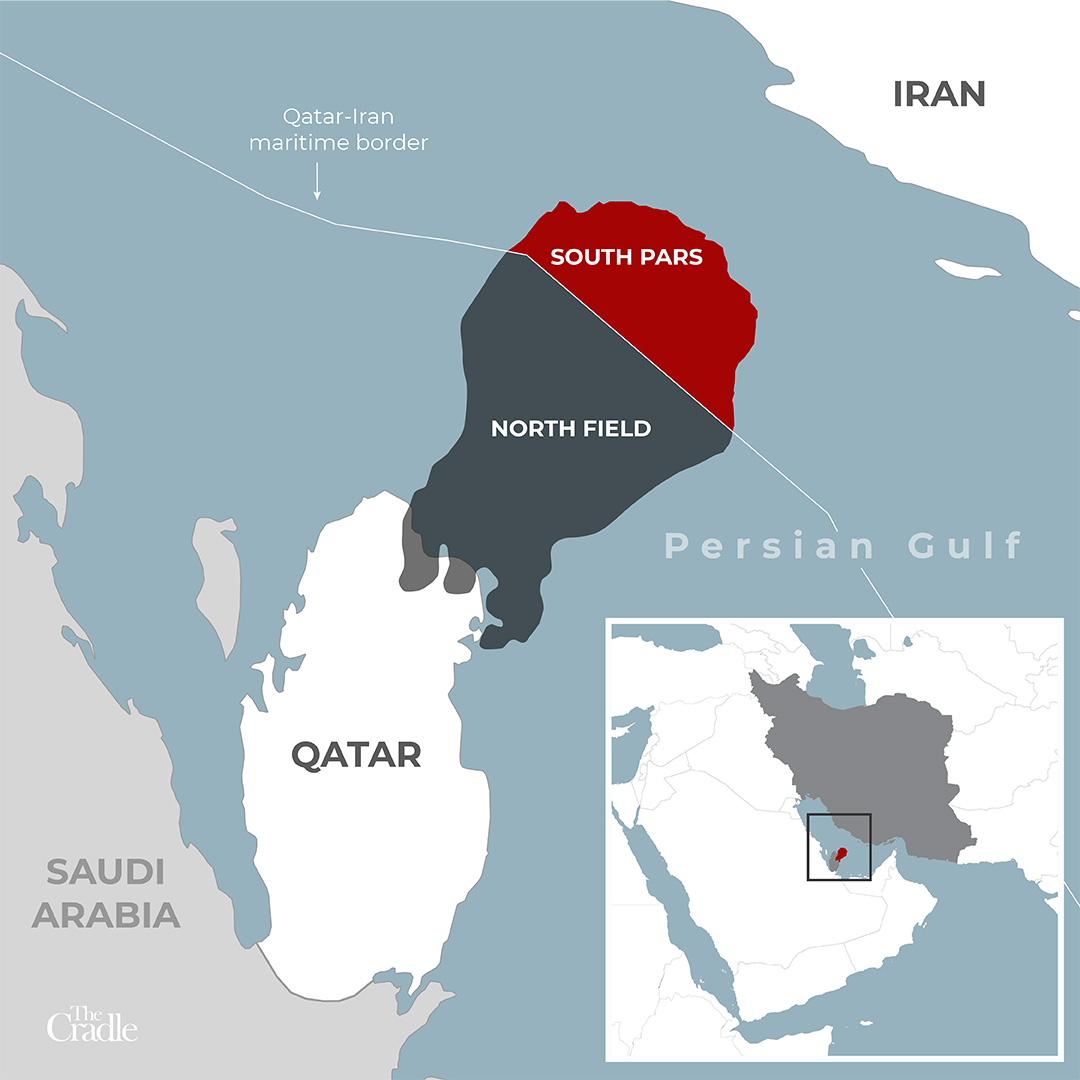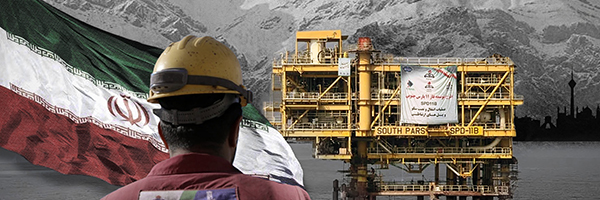Last week, Iranian President Ebrahim Raisi inaugurated the 11th and final phase of the South Pars gas field (SPGF). This event marked a significant stride in the development of natural gas resources in the world’s largest natural gas field, a domain where Iran had lagged considerably behind its Persian Gulf neighbor, Qatar. The expansion is poised to enhance domestic consumption and bolster Iran’s gas exports.
The SPGF is a colossal reserve, boasting an estimated 14.2 trillion cubic meters of gas, representing a staggering eight percent of the world’s total gas reserves and an astounding 47 percent of Iran’s proven gas reserves. Located 100 kilometers from the coast, it spans an area of 9,700 km2, of which Iran controls 3,700 km2.
The inauguration of the last phase is a noteworthy achievement as it transpired despite unilateral energy sanctions and without the involvement of foreign experts — an accomplishment celebrated by Iranian media as a “remarkable success” for the Raisi government.

An Iranian success story
Phase 11 of the SPGF languished in partial completion for over two decades. Situated on the border of the joint field shared with Qatar, every delay translated into more gas revenue flowing into Doha’s coffers.
Throughout the past 20 years, various foreign companies were tasked with bringing the final phase to fruition, but each endeavor was left unfinished, often due to western sanctions. Notably, France’s TotalEnergies was the primary company selected for this multi-billion-dollar undertaking, having entered into contracts in both 2000 and 2017 for the development of Phase 11.
However, external factors, such as Donald Trump’s failed “maximum pressure” sanctions campaign against Iran and the inability to secure exemption, led to the termination of their involvement. Malaysia’s state-owned energy giant Petronas and China’s CNPC initially expressed interest in collaborating with Iran but withdrew due to the complexities surrounding sanctions on Tehran.
As foreign entities continued withdrawing from the project, Iranian company Petro Pars, initially part of a consortium alongside foreign counterparts for Phase 11, assumed sole responsibility for the project’s development, as dictated by Iranian energy authorities. Remarkably, after two decades of stagnation, the project was completed within two years by relying on the expertise of domestic professionals.
This achievement boasted an impressive 88 percent reduction in costs and time, a feat attributed to creative problem-solving and the resourcefulness of engineers.
Phase 11 initially called for constructing two offshore platforms, requiring an estimated three years and $250 million. However, after several assessments, Iranian experts decided to move an existing platform from Phase 12 to Phase 11, enhancing efficiency and cutting costs.
The relocation of a platform weighing over 3,200 tons at a cost of approximately $30 million is considered an unprecedented feat for the country and a rarity in the world, as it was accomplished without the help of foreign experts.
Gas shortages and sanctions-related challenges
The Islamic Republic is the fourth-largest consumer of natural gas in the world. As such, the increase in gas production from the last SPGF phase has injected more gas into the domestic network while opening avenues for gas exports and foreign currency earnings.
Despite having the second-largest proven gas reserves in the world, only trailing behind Russia, Iran has faced a shortage of domestic gas production for several years, to the point where last winter, the country suffered from gas shortages and disruptions in many cities.
Several factors, including limited access to essential equipment and technologies, mismanagement, financial constraints, aging infrastructure, and international sanctions, have contributed to the challenges faced by Iran’s energy sector.
Statistics reveal a grim outlook for gas production in Iran as extraction capacity falls short of surging demand. A report from the Majlis Research Center predicts that by 2041, Iran’s total natural gas supply will reach 898.7 million cubic meters per day (CMD), while consumption across sectors is projected to stand at 1410.8 million CMD —an imbalance of 512 million CMD.
In 2021, the natural gas crisis emerged as early as autumn, but by 2022, it struck during the summer months. During the winter of 2021-22, Iran faced a staggering deficit of 250 million CMD, a figure greater than Turkiye’s entire daily gas consumption, according to Oil Minister Javad Owji.
Sanctions issued following Washington’s unilateral withdrawal from the nuclear deal known as the Joint Comprehensive Plan of Action (JCPOA) in 2108 have exerted severe economic pressure and hampered Iran’s economic growth.
The energy sector has been significantly affected by a need for more financial resources. While Iran invested up to $20 billion annually in its oil and gas sector in the early 2000s, this figure was halved by 2016 and has since dwindled to a mere $3 billion per year.
To offset the lack of investment, Iran sought partnerships with friendly countries. In July 2022, Russian energy giant Gazprom inked a $40 billion cooperation agreement with the National Iranian Oil Company (NIOC) to develop two gas and six oil fields.
Economic impact of Phase 11
The SPGF is a cornerstone of the country’s energy sector. On average, it yields 680 million CMD, meeting 75 percent of Iran’s gas consumption, 40 percent of gasoline production, and 50 percent of electricity generation.
Furthermore, the various refineries in the south contribute approximately $3.5 billion annually to the country’s energy revenue, providing employment to over 60,000 individuals.
The early stages of Phase 11 will catapult gas production to 15 million CMD. As the project reaches full completion, the ultimate target is 56 CMD, supplementing the existing production capacity of the SPGF.
Additionally, the completion of this phase has raised Iran’s prospects for gas exports. Together with the 56 million CMD production, Phase 11 will yield 290 million barrels of gas condensate, 14 million tons of liquefied gas, 315 billion cubic meters of sweet gas, 12 million tons of ethane, and 2 million tons of sulfur.
With this enhanced capacity, Iran can establish a credible position for future negotiations concerning gas supply to Europe, particularly if the Ukraine crisis persists into the coming winter.
Raisi-nomics
The completion of Phase 11 serves as a stimulus for the Iranian economy. According to the state-run ISNA news agency, this project is estimated to generate up to 10,000 jobs and inject $20 billion into the economy. Furthermore, it promises to breathe new life into Iran’s beleaguered oil and gas sector, which has grappled with persistent challenges stemming from sanctions and limited foreign investment.
The boost in energy capacity is poised to propel Iran’s ports to greater prosperity, placing them on a competitive footing with the UAE, Oman, and Saudi Arabia. While Iran still has a considerable journey ahead to match the capacities of these Gulf ports, its own capabilities have impressively surged by nearly 40 percent over seven years, from 2014 to 2021.
Iran boasts 11 major ports, with over 90 percent of its foreign trade conducted through maritime transportation. Tehran has set an ambitious target of achieving a cargo handling capacity of 500 million tons within the next five years. Increased energy production and exports can expedite the realization of this goal.
The inauguration of the 11th phase of the SPGF has been hailed as a major success for the Raisi administration, although the added capacities from this phase may not completely address Iran’s domestic energy needs.
Nevertheless, the technical accomplishments achieved during project implementation and its gradual completion after two decades of stagnation, marred by unsuccessful cooperation with foreign entities, can partially satisfy public sentiment and bring about incremental changes within the country’s complex economic structure.

